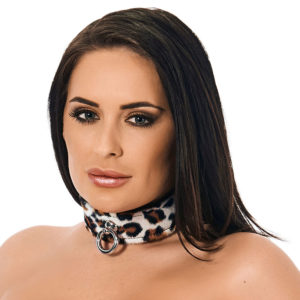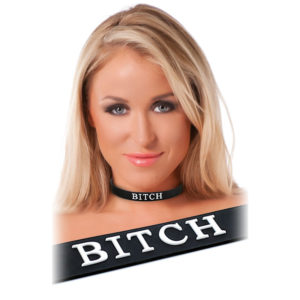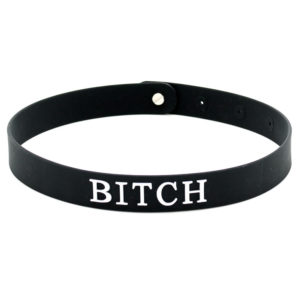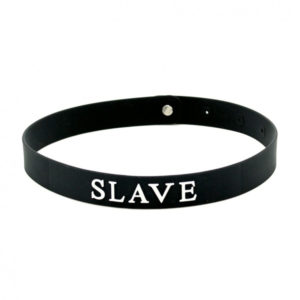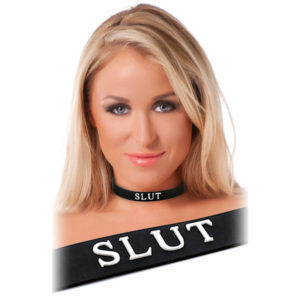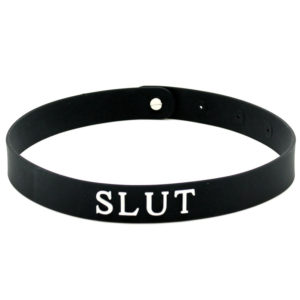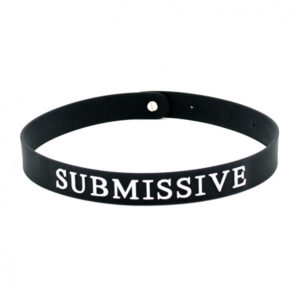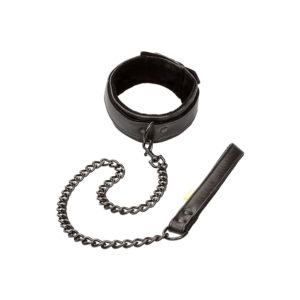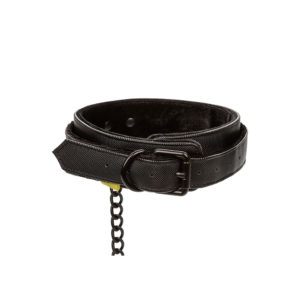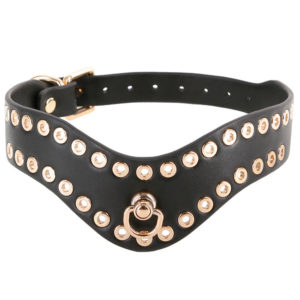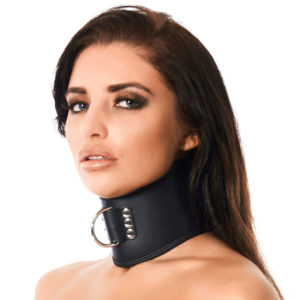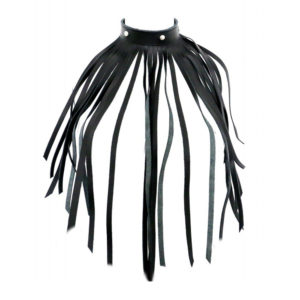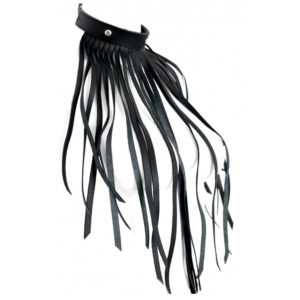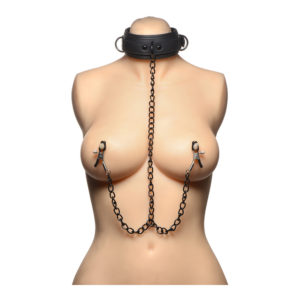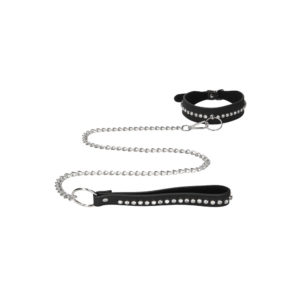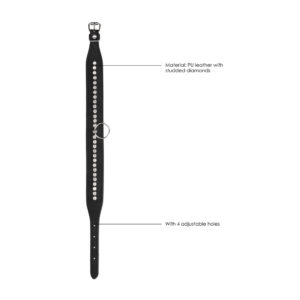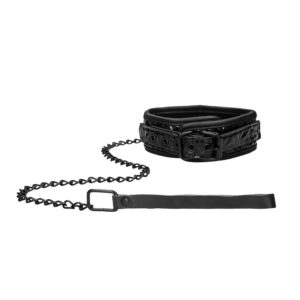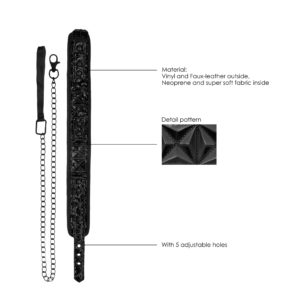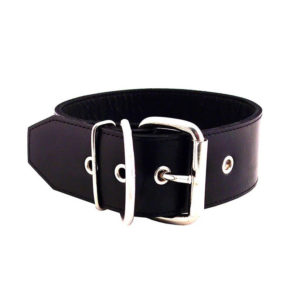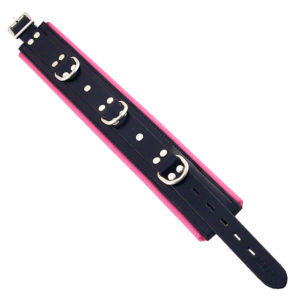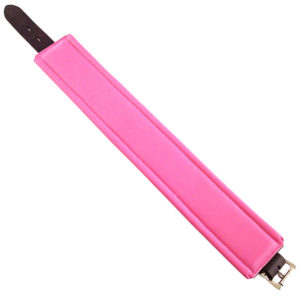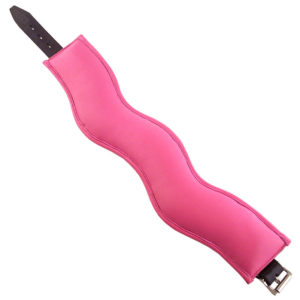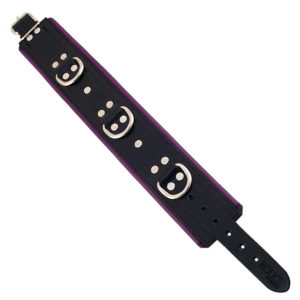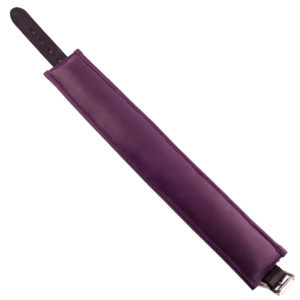Collars
Our collection of collars is designed to cater to all of your desires and help you explore your sexual fantasies like never before. Made from high-quality materials, such as leather, nylon, and metal, to ensure maximum comfort and durability during play, we offer a variety of styles and designs – including classic leather collars, locking collars, spiked collars, and more – to suit every taste and preference.
Our collars are not only great for BDSM play, but can also be used as a fashion statement for a kinky night out. They are also versatile enough to be used with other BDSM accessories, such as leashes, cuffs, and nipple clamps, giving you endless possibilities to explore your deepest desires.
At VibeShop, we understand the importance of privacy and discretion when it comes to shopping for sex toys. That’s why we offer discreet packaging and secure payment options, so you can shop with confidence and peace of mind.
With our competitive prices, fast shipping, and exceptional customer service, we are confident that you will find the perfect collar to take your sexual experiences to the next level. So, what are you waiting for? Shop our collection of collars today and unleash your wildest fantasies with Vibeshop.uk.
Showing 1–16 of 47 results
- £102.00 Select options This product has multiple variants. The options may be chosen on the product page
Showing 1–16 of 47 results
Types of Collars:
There are several different types of collars used in BDSM. Each has its own meaning and can be used to signify different levels of commitment or status within a relationship or BDSM community. Here are a few of the most common types of collars:
- Training Collars: These collars are often used in BDSM training and are intended to help the submissive learn and grow within the dynamic. Training collars may be temporary or permanent and are used to help establish a sense of ownership and control between the dominant and submissive.
- Play Collars: These collars are used specifically for play and may be used during a scene or for short-term play. Play collars can be simple or ornate, depending on the aesthetic preferences of the users.
- Day Collars: Day collars are often used to signify a 24/7 BDSM relationship. These collars are worn in public and can range from subtle to more ornate designs.
- Slave Collars: Slave collars are intended to symbolize ownership and are often used in consensual slave/master relationships. Slave collars may be locked or unlocked and may include a variety of adornments, such as D-rings or leashes.
Significance of Collars:
Collars hold significant meaning within BDSM culture and can signify a range of different things depending on the context of their use. Here are a few of the most common meanings associated with collars in BDSM:
- Ownership: Collars can signify ownership within a BDSM relationship. This can be a powerful symbol of submission and control between the dominant and submissive.
- Commitment: Collars can be used to signify a commitment to a BDSM relationship. This can be particularly true in 24/7 relationships where a day collar may be worn as a sign of the submissive’s commitment to the dominant.
- Protection: Collars can be used to protect submissives and keep them safe within a BDSM community. Wearing a collar can signal that a submissive is owned or under the protection of a dominant.
Safety Considerations:
When using collars in BDSM play, it’s important to take certain safety precautions to prevent injury or harm. Here are a few important safety considerations to keep in mind:
- Communication: Before using a collar in BDSM play, it’s important to establish clear communication between all parties involved. This includes discussing the significance of the collar and establishing boundaries and consent.
- Proper Fit: It’s important to ensure that the collar fits properly and is not too tight or too loose. A collar that is too tight can restrict breathing, while a collar that is too loose can slip and cause injury.
- Safety Release: Collars should always have a safety release mechanism in case of emergency. This can be in the form of a breakaway clasp or a quick-release buckle.
- Checking for Injury: After using a collar, it’s important to check for any signs of injury or discomfort. This includes checking for marks or bruising around the neck area.

